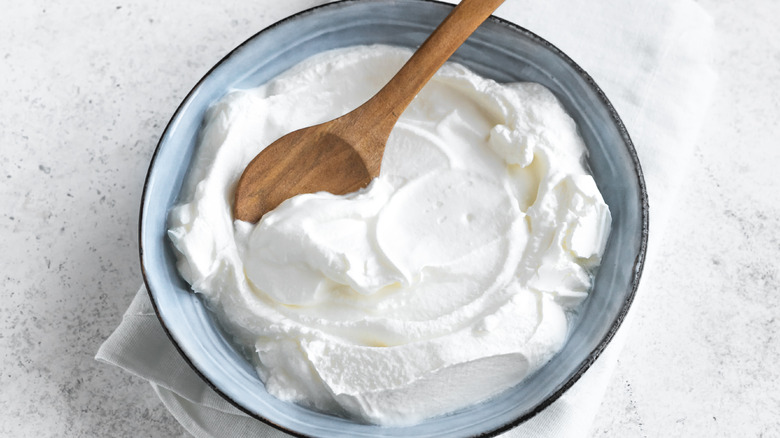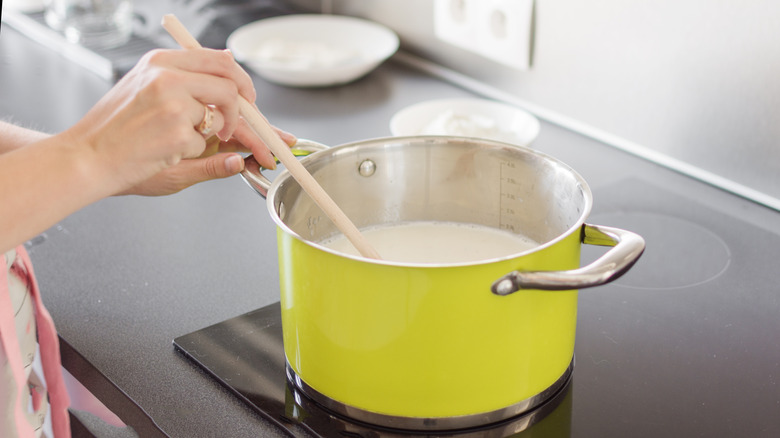The Step You Absolutely Can't Skip When Making Yogurt
We may receive a commission on purchases made from links.
There's no doubt that yogurt is a nutritious food, but it can be hard to shop for. That's because, as The Manual reports, while yogurt is full of calcium, probiotics, and protein, many store brands are also loaded with sugar. Livestrong says that some store brands contain as much as 25 grams of sugar per serving. A 2017 study published in the British Medical Journal examined over 900 yogurts across the U.K. and found that the average yogurt contained 10 grams of sugar per 100 grams.
It's natural for milk (and incidentally yogurt) to contain certain amounts of sugar, but many brands have added excessive amounts of sugary flavors that make a sensible food choice feel more like a dessert (via Livestrong).
One great way to avoid those added sugars is to take matters into your own hands and make your own yogurt at home. Maybe you've already been weighing the pros and cons, or just feel intimidated by some of the choices involved, but yogurt can be an easy dish to make at home. While yogurt is essentially fermented milk, there is still some chemistry to keep in mind as you start down this path.
Scalding milk is an essential step
One of the key features of good yogurt is its nice creamy texture. One of the most important steps to obtaining this texture also happens to be one of the first steps to making yogurt.
The very first thing you'll want to do is scald your milk. Food Network describes scalding milk as heating it just short of the boiling point and then letting it return to its normal temperature. So when you're ready to make your yogurt, gently heat the milk on the stove until it reaches 180 to 190 degrees Fahrenheit, then remove it from heat, and leave it to cool (via Serious Eats).
As Harold McGee points out in "On Food and Cooking," this is a vital step in making yogurt because it denatures the whey protein known as lactoglobulin (via Serious Eats). Once denatured, these proteins coat other proteins present in the milk and prevent them from grouping together. This ensures that instead of a clumpy, curdled appearance as if you had left the milk out for too long, you'll have the creamy texture expected from yogurt.
Serious Eats notes that another bonus of scalding milk is that it will kill any other bacterias that might try and compete with your starter culture. This will help ensure a steady fermentation, and a deliciously tangy yogurt when all is said and done.

